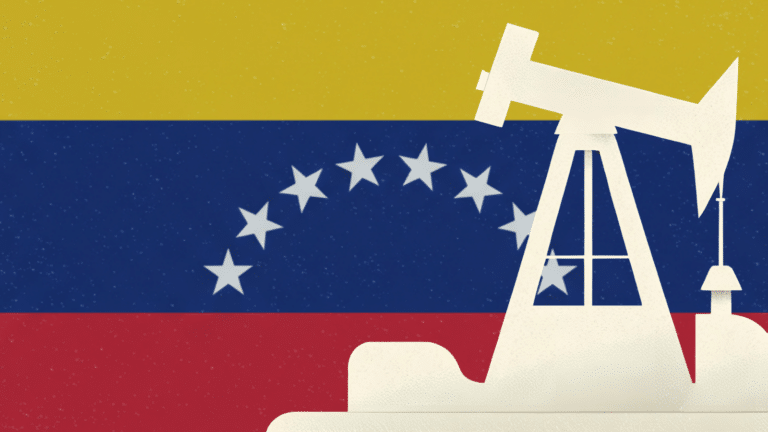This website uses cookies as well as similar tools and technologies to understand visitors’ experiences. By continuing to use this website, you consent to Columbia University’s usage of cookies and similar technologies, in accordance with the Columbia University Website Cookie Notice.
Energy Explained
Insights from the Center on Global Energy Policy
This Energy Explained post represents the research and views of the author. It does not necessarily represent the views of the Center on Global Energy Policy. The piece may be subject to further revision. Contributions to SIPA for the benefit of CGEP are general use gifts, which gives the Center discretion in how it allocates these funds. Rare cases of sponsored projects are clearly indicated.
For a full list of financial supporters of the Center on Global Energy Policy at Columbia University SIPA, please visit our website at Our Partners. See below a list of members that are currently in CGEP’s Visionary Circle. This list is updated periodically.
President Biden has merged the nation’s climate and trade policy strategies, with tariffs as a defining feature.[1] Duties have been imposed on imports of solar panels, steel, aluminum, electric vehicles (EVs), and batteries. Amidst shifting domestic and global policy landscapes, a new presidential administration will have the opportunity to reassess these tariffs next year. Former President Trump would likely pursue drastic changes, including a greater reliance on tariffs and less of a focus on climate goals.[2] In contrast, Vice President Harris is unlikely to pursue major changes to the Biden administration strategy. This post suggests that in the event of a Harris presidency, small and targeted changes to current Biden administration policies – like adding phaseout schedules to existing tariffs and pursuing multilateral agreements rather than new unilateral tariffs – have the potential to lower prices for consumers, boost economic competitiveness, and strengthen international climate cooperation.
Why the Biden administration imposed climate-related tariffs
To be sure, a compelling case can be made for climate-related tariffs. The vast economic opportunities of clean energy technologies and the existential threats to fossil fuel-dependent communities has led to the widespread adoption of “green industrial policy” strategies that support strategic domestic industries. Whether the goal is energy dominance, a green new deal, or national security, US policymakers are intent on making American firms and workers global leaders in emerging clean technologies and supply chains. Tariffs can play a useful role in these strategies, particularly as stopgap measures when domestic industries face imminent but perhaps temporary threats from foreign competitors.
However, other factors that motivated the pursuit of climate-related tariffs were specific to the time when President Biden took office. In 2021, the COVID-19 pandemic had led to fragilities in global supply chains that made onshoring production a priority. In the wake of the Trump administration, tensions with China had reached an all-time high. Laws like the Inflation Reduction Act (IRA) with large-scale support for domestic clean energy industries faced uncertain prospects in Congress, meaning executive actions may have needed to play larger roles in industrial strategies. Stronger climate-related tariffs were plausible solutions for each of these problems.
How a Harris Administration Could Pivot
If some of the justifications for the Biden administration’s tariff-heavy approach to climate and trade policy no longer apply, an incoming administration may want to consider policy changes because tariffs impose costs on Americans. Tariffs hurt consumers by raising prices — a study by the Congressional Budget Office in 2020 (prior to the Biden administration) estimated that tariffs put in place by the US and its trading partners reduced the average real household income of Americans by over $1,200.[3] Poorer households are disproportionately harmed by tariff-induced price increases.[4] Tariffs can also hurt American producers by raising the costs of their inputs to production and by instigating trade wars. US farmers were severely impacted when China, in retaliation to Trump-era US tariffs, imposed tariffs on American agricultural products, leading to a significant drop in exports.[5]
Indeed, an incoming President Harris would face a different political and economic landscape in early 2025—with at least a temporary reprieve from the pressures of elections and pandemics, and a boom in manufacturing construction easing concerns about domestic competitiveness in critical industries.[6] To adjust to new realities, a Harris administration could consider the following three policy tweaks.
- Implement phase-out schedules for existing climate-related tariffs. Making tariffs temporary would provide a strong incentive for innovation, as domestic industries would need to rapidly become competitive in global markets to survive. Phaseout schedules would also ensure that American consumers have access to lower-cost products in critical markets, like solar and EVs, where rapid clean energy deployments are needed to keep pace with climate goals.
- Recommit to strengthening US trade relationships among allies. The case for tariffs is strongest when trade partners are providing unfair advantages to their own domestic industries, thus requiring retaliatory measures to level the playing field. China is widely accused of such trade practices. A multilateral response to trade adversaries will be more effective than unilateral actions, but cooperation is challenging when the US is taking aggressive trade stances toward allies as well. While the Biden administration has emphasized the importance of “friendshoring” – building supply chain networks among political and economic allies – a Harris administration could better put this principle into practice.[7]
- Abandon the Biden administration’s pursuit of a broad tariff on the carbon-intensity of imports.[8] The idea of a carbon border adjustment mechanism (CBAM) gained steam largely because the European Union is adopting a CBAM to complement a carbon price imposed on domestic production. The US does not have a domestic carbon price, and a unilateral carbon tariff would likely be met with retaliation from trading partners and scorn from lower-income countries that rely on carbon-intensive production for development.
Instead of a broad climate-tariff, the Harris administration could pursue more collaborative “climate clubs” – international coalitions committed to phasing out carbon-intensive variants of internationally traded products.[9]Similar to the success of the Montreal Protocol in phasing out chlorofluorocarbons (CFCs) to protect the ozone layer, climate clubs could combine commitments to transition to carbon-free products with financial support for lower-income countries and penalties for non-compliance. While tariffs might have a limited impact on reducing emissions, climate clubs could be game-changing solutions for decarbonizing industries like steel, cement, and chemicals, which together account for over 25 percent of global carbon dioxide emissions.[10]
President Biden’s tariff-heavy climate and trade strategy was, to some extent, a product of its time and a consequence of unique political and economic challenges. A recalibration of this strategy could embrace a more balanced approach that avoids the pitfalls of excessive protectionism and puts the county in a better position to be a global leader on climate action, all while retaining the aspects of the Biden strategy that support American firms, workers, and communities.
CGEP’s Visionary Circle
Corporate Partnerships
Occidental Petroleum Corporation
Tellurian Inc
Foundations and Individual Donors
Anonymous
Anonymous
the bedari collective
Jay Bernstein
Breakthrough Energy LLC
Children’s Investment Fund Foundation (CIFF)
Arjun Murti
Ray Rothrock
Kimberly and Scott Sheffield
[1] https://www.whitehouse.gov/briefing-room/speeches-remarks/2024/04/16/remarks-as-prepared-for-john-podesta-columbia-global-energy-summit/
[2] https://www.pbs.org/newshour/economy/trump-favors-huge-new-tariffs-how-do-they-work
[3] https://www.cbo.gov/publication/56073
[4] https://www.piie.com/blogs/trade-and-investment-policy-watch/tariffs-hit-poor-americans-hardest
[5] https://www.ers.usda.gov/amber-waves/2022/march/retaliatory-tariffs-reduced-u-s-states-exports-of-agricultural-commodities/
[6] https://www.atlanticcouncil.org/blogs/econographics/the-ira-and-chips-act-are-supercharging-us-manufacturing-construction/
[7] https://home.treasury.gov/news/press-releases/jy1872
[8] https://www.washingtonexaminer.com/policy/energy/3066372/podesta-floats-idea-of-carbon-pricing-on-imports/
[9] https://www.foreignaffairs.com/united-states/green-gridlock
[10] https://www.canarymedia.com/the-tough-stuff-decarbonizing-steel-cement-and-chemicals
More on Energy Explained Energy Explained
Implications of the Trump Administration’s Tariff Announcement on US Economic Statecraft
This Energy Explained post represents the research and views of the author. It does not necessarily represent the views of the Center on Global Energy Policy. The piece...

The Impact of the New US Oil Tariffs on Venezuela
This Energy Explained post represents the research and views of the author. It does not necessarily represent the views of the Center on Global Energy Policy. The piece...

Q&A: Trump’s Executive Order on US Domestic Mineral Production
This Energy Explained post represents the research and views of the author. It does not necessarily represent the views of the Center on Global Energy Policy. The piece...

The Impact of Trump Tariffs on US-Canada Minerals and Metals Trade
This Energy Explained post represents the research and views of the author. It does not necessarily represent the views of the Center on Global Energy Policy. The piece...

Relevant
Publications
Robert J. Johnston: President Trump has thrown down the economic gauntlet. Canada must be unified in our response
Pitting Western Canada against Eastern Canada is a terrible strategy for winning Trump’s trade war

How Trump Could Dethrone the Dollar
The world’s reserve currency may not survive the weaponization of U.S. economic power.

The global trading system needs new rules, not tariffs, say Wally Adeyemo and Joshua Zoffer
A former deputy treasury secretary and a presidential economic adviser on the need to draw a sharper line between open economies and the rest | By Invitation




